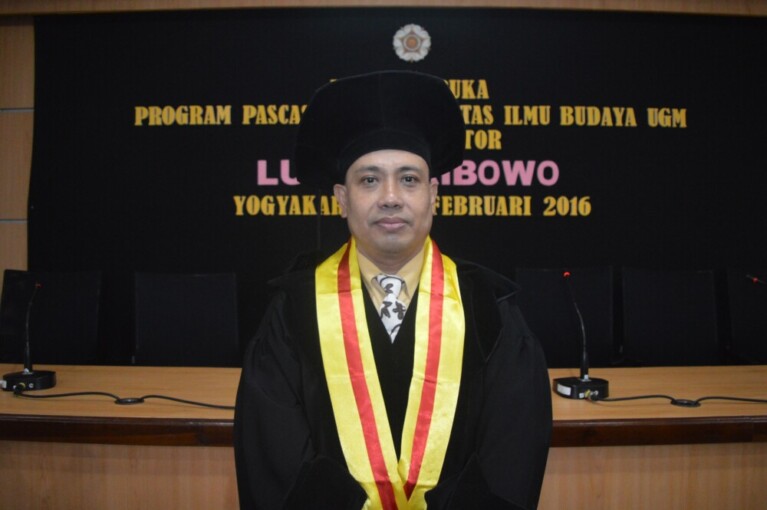
Language disorder is called aphasia. The disorder related to brain damage is caused by, among others, stroke. The prevalence of stroke is increasing. Meanwhile, people that suffer from motoric aphasia produce an utterance that is in line with the existing motoric speaking ability, while those that suffer from sensoric aphasia produce an utterance in line with ability to comprehend a question or instruction given to them.
“Patients of motoric aphasia try to produce an utterance, while those with sensoric aphasia respond to utterance stimulation,” said Luita Aribowo during the open doctoral examination at Faculty of Cultural Sciences UGM on Wednesday (24/2).
In his dissertation titled Disorder in Utterance Production of Aphasia Patients Due to Stroke: Case Study in Dep/SMF of Neurological Science of Dr. Soetomo Hospital Surabaya, Luita said both patients of sensoric and motoric aphasia make a string of utterance based on their existing abilities. Often they get upset because their intention or want is not understood by their family members.
Luita said the utterance production by both types of aphasia is trying to make the esiest production to do, with light not heavy or strong articulation.
“Voiced utterance is changed into voiceless utterance. Back utterance is changed into front utterance, and utterance is changed into bilabial as bilabial utterance is easier to produce and is an early utterance produced by man,” said the lecturer from Universitas Airlangga.
Other tendencies are utterance production follows minimal law effort and relates to the process or stage of command of language utterance in children. There are some early utterances made by human. Some patients, whether with motoric or sensoric aphasia, do this.
According to Luita, his research at the Dr. Soetomo Hospital was beneficial to know the utterance production of aphasia patients due to stroke and its comparison, also to get the level of severity in patients in terms of linguistic perspective, especially utterance production.


